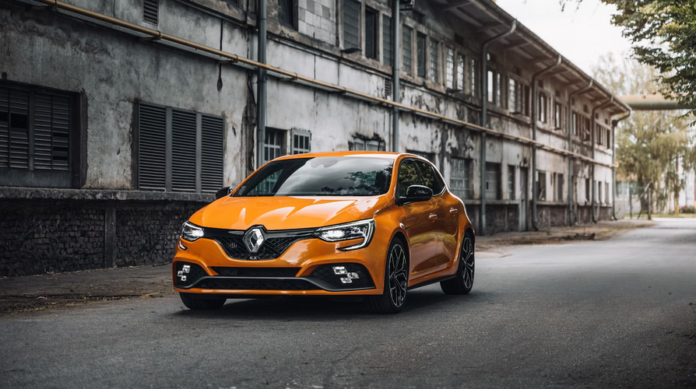Car design trends are constantly evolving, influenced by technological advancements, consumer preferences, and environmental considerations. As we enter 2024, several exciting trends are shaping the automotive industry and defining the aesthetic and functional aspects of modern vehicles.
- Electric Vehicle Revolution: One of the most prominent trends in car design is the rise of electric vehicles (EVs). With a growing focus on sustainability and reducing carbon emissions, EVs have become a top priority for many automakers. This trend is reflected in the design of EVs, which often feature sleek and aerodynamic shapes to maximize efficiency. Additionally, EVs offer designers more freedom to experiment with interior layouts and innovative features, thanks to the absence of traditional internal combustion engines.
- Minimalism and Simplicity: Minimalist design is gaining popularity in the automotive world, with a focus on clean lines, uncluttered interiors, and simplified controls. This trend emphasizes functionality and ease of use, with an emphasis on intuitive interfaces and ergonomic designs. The goal is to create a harmonious and calming environment for drivers and passengers, enhancing the overall driving experience.
- Digitalization and Connectivity: Cars are becoming increasingly connected and integrated with digital technologies. Infotainment systems with large touchscreen displays, digital instrument clusters, and voice-activated controls are becoming standard features in many vehicles. Designers are focusing on creating seamless interfaces that blend technology with elegance, providing drivers with intuitive access to information and entertainment while on the road.
- Innovative Lighting Designs: Lighting plays a crucial role in car design, both aesthetically and functionally. LED and OLED technology have revolutionized automotive lighting, allowing designers to create intricate and dynamic lighting signatures. From stylish daytime running lights to adaptive headlights that adjust to driving conditions, lighting designs are becoming a key differentiator for brands and models.
- Sustainable Materials and Eco-Friendly Design: As environmental concerns continue to grow, automakers are exploring sustainable materials and eco-friendly design practices. This includes using recycled and renewable materials in car interiors, reducing the environmental footprint of manufacturing processes, and designing vehicles for optimal energy efficiency. Sustainable design is not just a trend but a necessity for the future of automotive design.
- Crossover and SUV Dominance: The popularity of crossovers and SUVs shows no signs of slowing down. These vehicles blend the versatility of traditional SUVs with the comfort and handling of passenger cars, appealing to a wide range of consumers. Design trends in this segment include bold and muscular exteriors, spacious and versatile interiors, and advanced safety features to enhance off-road capabilities.
- Autonomous Driving Features: While fully autonomous vehicles are still in development, semi-autonomous driving features are becoming increasingly common. Car designers are integrating sensors, cameras, and radar systems into vehicle exteriors without compromising aesthetics. The focus is on creating a seamless and integrated look while ensuring that these technologies enhance safety and convenience for drivers.
- Personalization and Customization: Consumers are seeking more personalized and customized options when it comes to car design. Automakers are responding by offering a range of colors, trims, and accessories that allow buyers to tailor their vehicles to their preferences. From unique paint finishes to customizable interior themes, personalization is a key trend driving car design in 2024.
- Retro and Nostalgic Designs: Retro-inspired designs are making a comeback, appealing to consumers’ nostalgia for classic cars. Modern vehicles are incorporating retro elements such as chrome accents, vintage-inspired badges, and retro color schemes to evoke a sense of heritage and timeless style. This trend blends the best of past and present design aesthetics, creating cars that are both nostalgic and contemporary.
- Emphasis on Safety and Well-Being: Safety and well-being are integral aspects of car design in 2024. Designers are incorporating advanced safety features such as collision avoidance systems, pedestrian detection, and driver monitoring into vehicle designs. Additionally, there is a focus on creating comfortable and ergonomic interiors that promote driver wellness, with features like adjustable seating, ambient lighting, and noise-canceling technologies.
In summary, car design trends in 2024 reflect a dynamic and diverse landscape driven by innovation, sustainability, technology, and consumer preferences. From the electric vehicle revolution to minimalist aesthetics, digital connectivity, and personalized options, the automotive industry is constantly evolving to meet the demands of a changing world while delivering vehicles that are safe, stylish, and environmentally conscious.
Navigating Autonomous Vehicles: Challenges and Opportunities
Autonomous vehicles (AVs) have long been heralded as the future of transportation, promising safer roads, increased efficiency, and reduced environmental impact. However, the journey towards widespread adoption and integration of AVs into everyday life is not without its challenges and opportunities.
One of the primary challenges facing the adoption of autonomous vehicles is the complex regulatory landscape. Different regions and countries have varying regulations and standards for AVs, creating a patchwork of rules that AV manufacturers and developers must navigate. Ensuring compliance with these regulations while also pushing the boundaries of AV technology is a delicate balancing act.
Another significant challenge is the issue of safety and public trust. While AVs have the potential to significantly reduce traffic accidents caused by human error, high-profile accidents involving autonomous vehicles have raised concerns about their reliability and safety. Building public trust in AV technology through rigorous testing, transparency about capabilities and limitations, and clear communication about safety measures is essential for widespread acceptance.
Technical challenges also abound in the development of autonomous vehicles. Creating robust and reliable systems for navigation, obstacle detection, and decision-making in complex and dynamic environments is a monumental task. AVs must be able to adapt to unpredictable situations on the road, such as construction zones, adverse weather conditions, and interactions with human drivers and pedestrians.
Furthermore, the cost of developing and deploying autonomous vehicles remains a significant barrier. Advanced sensors, computing hardware, software algorithms, and infrastructure upgrades all contribute to the high cost of AV technology. Finding ways to reduce costs while maintaining high standards of safety and performance is a critical challenge for the industry.
Despite these challenges, the opportunities presented by autonomous vehicles are vast and transformative. One of the most significant advantages of AVs is their potential to revolutionize transportation accessibility. For individuals with disabilities or limited mobility, autonomous vehicles can offer newfound freedom and independence, enabling them to travel more easily and access essential services.
AVs also have the potential to reshape urban planning and infrastructure. By reducing the need for parking spaces and optimizing traffic flow, autonomous vehicles can help cities reclaim valuable space for parks, green areas, and pedestrian-friendly zones. This shift towards more efficient land use can lead to healthier, more livable cities.
In addition to improving safety on the roads, autonomous vehicles can also have a positive impact on the environment. By optimizing routes, reducing congestion, and promoting the use of electric and alternative fuel vehicles, AVs can contribute to lower emissions and cleaner air quality. This aligns with global efforts to combat climate change and promote sustainable transportation solutions.
Furthermore, the rise of autonomous vehicles is driving innovation and economic growth in related industries. From software development and sensor technology to infrastructure upgrades and new business models for mobility services, the AV ecosystem is creating opportunities for job creation and entrepreneurship.
One of the most promising areas of opportunity in the autonomous vehicle space is the development of autonomous fleets for ride-hailing and delivery services. Companies like Uber, Lyft, and Amazon are investing heavily in AV technology to enhance the efficiency and cost-effectiveness of their operations. This shift towards autonomous fleets could revolutionize the way people and goods are transported, leading to more efficient and convenient mobility options for consumers.
Overall, while navigating the challenges of autonomous vehicles requires collaboration, innovation, and careful consideration of ethical and safety implications, the opportunities they present for transforming transportation, enhancing accessibility, and fostering sustainability are immense. By addressing these challenges head-on and leveraging the full potential of AV technology, we can pave the way towards a safer, more efficient, and more inclusive transportation system for the future.








